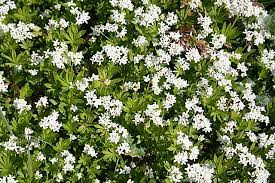Botanical Description:
Scientific Name: Dracaena spp. (commonly Dracaena cinnabari, Daemonorops spp., Croton lechleri)
Description: Dragon’s Blood is a bright red resin obtained from various plant species, including Dracaena cinnabari (Dragon’s Blood tree), Daemonorops spp. (rattan palms), and Croton lechleri (Sangre de Grado tree). These plants are native to different regions, with the resin often extracted from the bark or stems. The Dragon’s Blood tree, in particular, is known for its distinctive umbrella-shaped crown and red sap. The resin is tapped from the plant and dries to a deep red color.
Disclaimer:
This Materia Medica is provided for informational purposes only and should not replace professional medical advice. Please consult with a qualified healthcare practitioner or herbalist before using any herbal remedies.
Therapeutic Actions:
- Wound Healing: Dragon’s Blood is traditionally believed to have wound-healing properties, promoting tissue repair and regeneration.
- Anti-Inflammatory: It is recognized for its anti-inflammatory effects, potentially aiding in reducing inflammation.
- Antioxidant: The resin contains compounds with antioxidant properties, helping to neutralize free radicals.
- Anti-Microbial: Dragon’s Blood has been historically used for its potential antimicrobial properties.
Constituents:
- Dracorhodin: Dracorhodin is a key component responsible for the red color and some therapeutic properties.
- Proanthocyanidins: These compounds contribute to the antioxidant effects of Dragon’s Blood.
- Alkaloids: Some species may contain alkaloids with potential pharmacological activities.
Traditional Uses:
- Topical Applications: Dragon’s Blood has been used topically for wound healing, promoting skin health, and addressing skin conditions.
- Respiratory Support: In some traditional practices, Dragon’s Blood has been used for respiratory conditions, although more research is needed.
- Gastrointestinal Support: It has been historically employed for gastrointestinal issues, possibly due to its anti-inflammatory properties.
Dosage and Preparation:
- Topical Ointments: Dragon’s Blood resin can be incorporated into topical ointments, creams, or balms for skin applications.
- Tinctures: Tinctures can be prepared for internal use, although internal use should be guided by a healthcare professional.
- Poultices: Poultices or infused oils can be applied directly to wounds, cuts, or skin irritations.
Cautions and Considerations:
- Allergic Reactions: Individuals with known allergies to Dragon’s Blood or related plants should exercise caution.
- Pregnancy and Lactation: Pregnant or lactating individuals should consult with a healthcare professional before using Dragon’s Blood.
- Internal Use Caution: Internal use should be approached with care, and dosage recommendations should be followed to prevent adverse effects.
Conclusion:
Dragon’s Blood, derived from various plant species like Dracaena cinnabari, Daemonorops spp., and Croton lechleri, has a rich history of traditional use. Recognized for its wound-healing, anti-inflammatory, and antioxidant properties, it has been applied topically for skin health and internally for various conditions. Key constituents like dracorhodin and proanthocyanidins contribute to its therapeutic actions. Dragon’s Blood’s vibrant red resin is a testament to its historical significance and potential health benefits. Topical applications, tinctures, or poultices are common forms of administration. However, caution is advised for those with allergies, pregnant or lactating individuals, and internal use should be supervised by a healthcare professional. As with any herbal remedy, consultation with a qualified healthcare practitioner or herbalist is recommended to ensure safe and effective use based on individual health considerations. Dragon’s Blood remains a fascinating component of traditional herbal medicine, with its vibrant color mirroring its potential healing properties.






One comment on “Dragon’s Blood: Herbal Plant Profile”